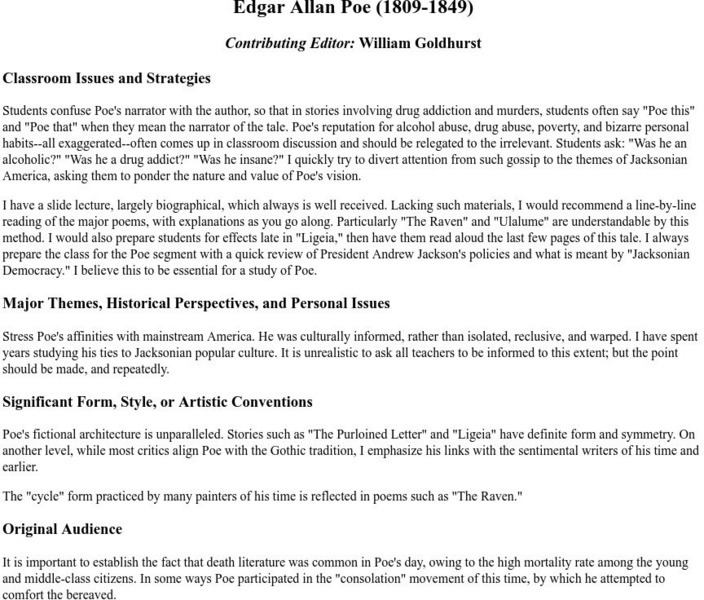Hi, what do you want to do?
Georgetown University
Georgetown University: Edgar Allan Poe (1809 1849)
This site is a professor's guide for students. This guide features information on how to distinguish between Poe and his narrators in his stories.





